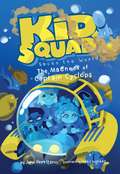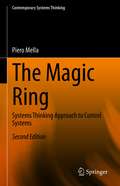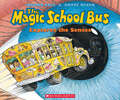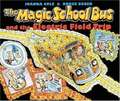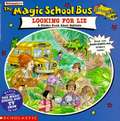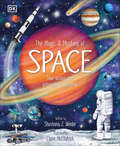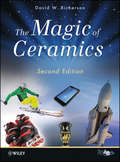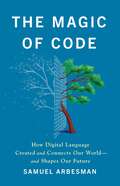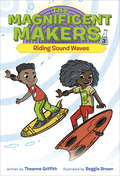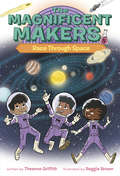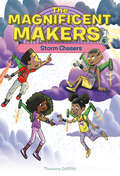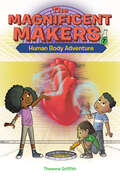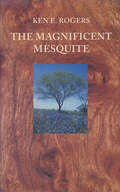- Table View
- List View
The Machines of Sex Research: Technology and the Politics of Identity, 1945-1985
by Donna J. DruckerThe Machines of Sex Research describes how researchers worldwide integrated technology into studies of human sexuality in the postwar era. The machines they invented made new ways of seeing bodies possible. Some researchers who studied men used machines like penile strain gauges to police "deviant" male sexuality; others used less painful devices like penis-cameras to study women's sexual responses and map the physiology of their arousal and orgasm. While researchers used the findings from their technological innovations to propose their own views of how people should view their bodies and should manage their sexual lives, their readers interpreted their findings to enact their own visions of sexuality. Drucker shows how the use of machines in sex research provided some of the intellectual underpinnings of the sexual revolution and the women's and gay rights movements, and in turn how the sex research community developed new machines for investigations that would enhance sexual happiness rather than constrict it. The Machines of Sex Research is a key read for those interested in the intersections between human sexuality, technology, and twentieth-century social movements. Describes the little-known history of the machines of human sex research in the postwar era Shows how researchers worldwide invented and used machines to study human sexuality and the body in new ways, and how they used and improved each other's designs Relates the relationship between the machines of sex research to Cold War sexualities and gender and sexual liberation movements.
The Mad Inventor's Workshop
by Liz HuyckInventing is all about ideas—ideas for making products better or creating new ones. To put these ideas into action, young inventors need tools for tinkering. Find out how to put together your own inventor's workshop with simple tools and common household objects.
The Madness of Captain Cyclops (Kid Squad Saves The World)
by John PerritanoWhen the testing of a nuclear-powered invisibility device goes awry, Captain Rudolph Von Dorn is transformed into the evil Captain Cyclops, blowing up ships and islands at will—and the Kid Squad, with the help of Von Dorn’s daughter Jenny, is called upon to reverse the effects of the accident and save the world.
The Magic Fan
by Keith BakerGuided by a magic fan, Yoshi builds a boat to catch the moon, a kite to reach the clouds, and a bridge that saves the villagers from a tidal wave.
The Magic Ring: Systems Thinking Approach to Control Systems (Contemporary Systems Thinking)
by Piero MellaThis book presents a new understanding on how control systems truly operate, and explains how to recognize, simulate, and improve control systems in all fields of activity. It also reveals the pervasive, ubiquitous and indispensable role of control processes in our life and the need to develop a “control-oriented thinking”—based on uncomplicated but effective models derived from systems thinking—that is, a true “discipline of control.” Over the book’s thirteen chapters, Piero Mella shows that there are simple control systems (rather than complex ones) that can easily help us to manage complexity without drawing upon more sophisticated control systems. It begins by reviewing the basic language of systems thinking and the models it allows users to create. It then introduces the control process, presenting the theoretical structure of three simple control systems we all can observe in order to gain fundamental knowledge from them about the basic structure of a control system. Then, it presents the anatomy of the simplest “magic ring” and the general theoretical model of any control system. This is followed by an introduction to a general typology of control systems and a broader view of control systems by investigating multi-lever control systems and multi-objective systems. The book undertakes the concepts through various environments, increasingly broader in scope to suggest to readers how to recognize therein control systems manifestations in everyday life and in natural phenomena. Updated for the 2nd edition, new chapters explore control systems regulating the biological environment and the organizations, with an in-depth study of the control of quality, productivity, production, stocks and costs. Finally, it concludes by dealing with the learning process, problem-solving, and designing the logical structure of control systems.
The Magic School Bus Explores the Senses (The Magic School Bus)
by Joanna ColeTo celebrate its 20th anniversary, Scholastic is re-releasing the ten original Magic School Bus titles in paperback. With updated scientific information, the bestselling science series ever is back!On a most sense-sational trip that takes them through an eye, an ear, a tongue, and even a dog's nose, Ms. Frizzle's class learns about the senses. Using their trademark sense of humor, Joanna Cole and Bruce Degen provide facts about the senses in both the human and animal worlds.
The Magic School Bus and the Electric Field Trip
by Joanna ColeSmall enough to squeeze through power lines, Ms. Frizzle's class learns how electric current travels through the town, lights up a light bulb, heats up a toaster, and runs an electric motor. Fans of the Magic School Bus won't be left behind by this simple and informative introduction to the generation and distribution of electricity. This book has picture descriptions.Also please note: where the book has two dashes instead of an em dash, I left two dashes; where the book has an em dash, I made an em dash.
The Magic School Bus: Looking For Liz
by Joanna ColeThe class takes the magic school bus to various animal habitats.
The Magic and Mystery of Space: Tour Across Our Astounding Universe (The Magic and Mystery of the Natural World)
by Shoshana WeiderEnter the world of amazing planets, swirling nebulae, and distant galaxies for an unforgettable journey through space.The Magic and Mystery of Space combines vivid illustrations with dazzling and up-to-date photography to help young scientists aged 7-9 learn all there is to know about space.Children will love to learn about the planets in our Solar System and distant black holes as they discover incredible facts and journey through space. This space guide features fascinating topics, like how stars die, what scientists do in space, and what life could look like on other planets.This space book for kids offers: A new and updated edition in the popular Magic and Mystery of series with all the latest facts and images.Striking illustrations by Claire McElfatrick, who has illustrated all the books in this series, combined with fascinating photography and expert CGIs.Material written by an expert space and science communicator, who is passionate about educating children about the cosmos.Core topics for 7–9 year olds, including planets, the Solar System, space missions, and plenty of space facts.The Magic and Mystery of Space brings the cosmos closer to home. Children will see incredible views from space telescopes, discover what it’s like walking on the Moon, and learn how to star-gaze. They’ll even get to meet some of the animals who have been to space! Filled with facts and fun, this book presents a beautiful and new take on space and is perfect for any young space lovers or future astronauts.
The Magic of Ceramics
by David W. RichersonMost people would be surprised at how ceramics are used, from creating cellular phones, radio, television, and lasers to its role in medicine for cancer treatments and restoring hearing. The Magic of Ceramics introduces the nontechnical reader to the many exciting applications of ceramics, describing how ceramic material functions, while teaching key scientific concepts like atomic structure, color, and the electromagnetic spectrum. With many illustrations from corporations on the ways in which ceramics make advanced products possible, the Second Edition also addresses the newest areas in ceramics, such as nanotechnology.
The Magic of Code: How Digital Language Created and Connects Our World—and Shapes Our Future
by Samuel ArbesmanIn the tradition of classics such as The Lives of a Cell, a bold reframing of our relationship with technology that argues code is "a universal force—swirling through disciplines, absorbing ideas, and connecting worlds" (Linda Liukas). In the digital world, code is the essential primary building block, the equivalent of the cell or DNA in the biological sphere—and almost as mysterious. Code can create entire worlds, real and virtual; it allows us to connect instantly to people and places around the globe; and it performs tasks that were once only possible in science fiction. It is a superpower, and not just in a technical sense. It is also a gateway to ideas. As vividly illustrated by Samuel Arbesman, it is the ultimate connector, providing new insight and meaning into how everything from language and mythology to biblical texts, biology, and even our patterns of thought connect with the history and nature of computing. While the building block of code can be used for many wondrous things it can also create deeper wedges in our society and be weaponized to cause damage to our planet or our civilization. Code and computing are too important to be left to the tech community; it is essential that each of us engage with it. And we fail to understand it to our detriment. By providing us with a framework to think about coding and its effects upon the world and placing the past, current, and future developments in computing into its broader setting we see how software and computers can work for people as opposed to against our needs. With this deeper understanding into the &“why&” of coding we can be masters of technology rather than its subjects.
The Magnificent Makers #1: How to Test a Friendship (The Magnificent Makers #1)
by Theanne GriffithBOOM! SNAP! WHIZ! ZAP! The Magnificent Makers series is filled with science, adventure, and characters that readers will love! Every book includes two science activities kids can do at home! A modern-day Magic School Bus for chapter book readers!Violet and Pablo are best friends who love science! So when they discover a riddle that opens a magic portal in the Science Space at school, they can't wait to check it out! Along with their new classmate, Deepak, the friends discover a magical makerspace called the Maker Maze. It's a laboratory full of robots, 3D printers, an antigravity chamber, and more. Doors line the walls of the makerspace, with a new science adventure waiting behind each one.With the help of a hilarious and odd scientist, the Magnificent Makers embark on out-of-this-world adventures that help them master the science concepts they are learning in school. This series will cover several scientific topics (at an age-appropriate level) ranging from human biology to ecology, while also exploring issues such as managing failure, teamwork, courage, and jealousy.Don't miss book #2: Brain Trouble!
The Magnificent Makers #2: Brain Trouble (The Magnificent Makers #2)
by Theanne GriffithBOOM! SNAP! WHIZ! ZAP! The Magnificent Makers series is filled with science, adventure, and characters that readers will love! Every book includes two science activities kids can do at home! A modern-day Magic School Bus for chapter book readers!Violet and Pablo are best friends who love science! So when they discover a riddle that opens a magic portal in the brain fair at school, they can't wait to check it out! In this adventure, the friends enter the Maker Maze--a magical makerspace--along with a set of twins who are interested in learning all about the brain. The kids can't wait to solve science puzzles . . . if first, they can learn to work together! With the help of a hilarious and odd scientist, the Magnificent Makers embark on out-of-this-world adventures that help them master the science concepts they are learning in school. This series will cover several scientific topics (at an age-appropriate level) ranging from human biology to ecology, while also exploring issues such as managing failure, teamwork, courage, and jealousy.
The Magnificent Makers #3: Riding Sound Waves (The Magnificent Makers #3)
by Theanne GriffithBoom! Snap! Whiz! Zap! The Magnificent Makers chapter book series is filled with science, adventure, and characters kids will love! Every book includes two science activities kids can do at home! A modern day Magic School Bus for the chapter book reader!A wacky scientist, Dr. Crisp loves to invite students to the her Maker Maze for a STEM-filled adventure! Just solve a riddle and the portal to the Maze will appear! But there's a catch...if the kids don't complete a challenge fast enough, they can never come back to the Maze!Pablo and Violet are on a field trip to the science museum and today they're paired up with a classmate they don't know very well--Henry. As they enter the Maze and learn about touch, hearing, and vision, Pablo and Violet learn that there's more to Henry and his odd behavior than meets the eye - Henry has a sensory processing disorder. Together they'll learn a little something about feelings (literally!), acceptance, and what makes us special.
The Magnificent Makers #4: The Great Germ Hunt (The Magnificent Makers #4)
by Theanne GriffithBoom! Snap! Whiz! Zap! The Magnificent Makers chapter book series is filled with science, adventure, and characters kids will love! Every book includes two science activities kids can do at home! This series is a modern day Magic School Bus for the chapter book reader!In class, Violet and Pablo have been learning about the icky world of germs! Violet has been out sick, and is excited she's feeling better... achoo! Well, she's mostly feeling better. She and Pablo are paired up with another classmate, Aria, who is a bit nervous that Violet keeps sneezing. When another riddle appears to transport them back to the Maker Maze--a magical makerspace--to learn all about bacteria, viruses, and fungi, Violet and Pablo find out why Aria is so nervous. Aria's body has more trouble fighting off illnesses than their bodies do. Together they learn all about good and bad germs, and why staying home until you're 100% recovered is really important. Don't miss any books in this STEM-tastic series! #1: How to Test a Friendship#2: Brain Trouble#3: Riding Sound Waves#4: The Great Germ Hunt#5: Race Through Space
The Magnificent Makers #5: Race Through Space (The Magnificent Makers #5)
by Theanne GriffithBoom! Snap! Whiz! Zap! The Magnificent Makers chapter book series is filled with science, adventure, and characters kids will love! Every book includes two science activities kids can do at home! A modern day Magic School Bus for the chapter book reader!Wacky scientist Dr. Crisp loves to invite students to the her Maker Maze for a STEM-filled adventure! Just solve a riddle and the portal to the Maze will appear! But there's a catch...if the kids don't complete a challenge fast enough, they can never come back to the Maze!Violet, Pablo, and Deepak return to the Maker Maze to learn all about outer space! But as they go through the levels of the Maker Maze, Pablo keeps making mistakes. Learning about space is his favorite, and his mistakes make him wonder whether he will ever be smart enough to be an astronaut.In this installment, the kids learn that mistakes are an important part of learning and being a Magnificent Maker. Don't miss any books in the series! #1: How to Test a Friendship#2: Brain Trouble#3: Riding Sound Waves#4: The Great Germ Hunt#5: Race Through Space
The Magnificent Makers #6: Storm Chasers (The Magnificent Makers #6)
by Theanne GriffithBoom! Snap! Whiz! Zap! The Magnificent Makers chapter book series is filled with science, adventure, and characters kids will love! Every book includes two science activities kids can do at home! A modern-day Magic School Bus for the chapter book reader!Pablo, Violet, and twins Devin and Skylar are zapped back to the Maker Maze for a weather-themed challenge! This time, they get to learn all about wind, the water cycle, and how storms are created. But even though the Maker Maze is as exciting as ever, Devin seems to be a little blue. In Storm Chasers, the kids learn that sometimes our emotions can create storms inside of us, and that's okay. Don't miss the other books in the series! #1: How to Test a Friendship#2: Brain Trouble#3: Riding Sound Waves#4: The Great Germ Hunt#5: Race Through Space
The Magnificent Makers #7: Human Body Adventure (The Magnificent Makers #7)
by Theanne GriffithBoom! Snap! Whiz! Zap! The Magnificent Makers is a fiction chapter book series filled with real science, adventure, and characters kids will love! Every book includes two science activities kids can do at home.A modern-day Magic School Bus for the chapter book reader!Pablo, Violet, and their new friend, Lorenzo, return to the Maker Maze for a science lesson about the human body! With new challenges in store, they get to learn all about the heart, lungs, and digestive system. But even though the Maker Maze is as fun as ever, Pablo seems a little annoyed with his friends' playful teasing.In Human Body Adventure, the kids remember that it's important to put themselves in others' shoes and to always be kind. Don't miss the other books in the series!#1: How to Test a Friendship#2: Brain Trouble#3: Riding Sound Waves#4: The Great Germ Hunt#5: Race Through Space#6: Storm Chasers
The Magnificent Makers #9: Rolling Through the Rock Cycle (The Magnificent Makers #9)
by Theanne GriffithBoom! Snap! Whiz! Zap! The Magnificent Makers is a fiction chapter book series filled with real science, adventure, and characters kids will love! Every book includes two science activities kids can do at home.A modern-day Magic School Bus for today's kids!A normal day at school collecting rocks becomes a magnificent adventure! Violet, Pablo, and their friend Daniel get transported to the Maker Maze to learn all about how rocks are made. Violet and Pablo are super excited to be back in the maze, but Daniel doesn't like that they can't choose the different activities. Can the friends work together to learn all about the rock cycle and escape the maze in time? In Rolling Through the Rock Cycle, the kids learn about being okay with change and trying new things. Don&’t miss the other books in the series! #1: How to Test a Friendship#2: Brain Trouble#3: Riding Sound Waves#4: The Great Germ Hunt#5: Race Through Space#6: Storm Chasers#7: Human Body Adventure#8: Go, Go, Green Energy!
The Magnificent Mesquite (Corrie Herring Hooks Series)
by Ken E. RogersA reliable source of food and shelter even in the severest droughts, the mesquite tree sustained American Indians in the Southwest for centuries. Today, mesquite is popular for barbecuing, woodworking, furniture making, flooring, sculpture, jewelry, and food products ranging from honey to jelly and syrup. Even ranchers, who once fought to eradicate mesquite, have come to value its multiple uses on well-managed rangeland. In this book written especially for a general readership, one of the world' leading authorities on mesquite presents a wealth of information about its natural history and commercial, agricultural, and woodworking uses. Ken Rogers describes the life cycle, species, and wide distribution of the mesquite, which is native or naturalized not only in the Southwest and Mexico, but also in India, Africa, Australia, South America, and Hawaii. He discusses the many consumer and woodworker uses of mesquite at length-even giving instructions for laying a mesquite wood floor and making mesquite bean jelly. He also looks into the ways that people are using mesquite in nature, from rangeland management in the Southwest to desertification prevention in arid countries.
The Maidens: The instant Sunday Times bestseller from the author of The Silent Patient
by Alex MichaelidesWe all keep secrets. Even from ourselves. 'A thrilling, heart-in-throat ride' STEPHEN FRY 'An absolute jaw-dropper' LUCY FOLEY 'Elegant, sinister, stylish' CHRIS WHITAKER 'Grips from start to finish' HARRIET TYCE * * * * * From the #1 New York Times bestselling author of The Silent Patient comes a spellbinding tale of psychological suspense, weaving together Greek mythology, murder, and obsession...Edward Fosca is a murderer. Of this Mariana is certain. But Fosca is untouchable. A handsome and charismatic Greek tragedy professor at Cambridge University, Fosca is adored by staff and students alike - particularly by the members of a secret society of female students known as The Maidens.Mariana Andros is a brilliant but troubled group therapist who becomes fixated on The Maidens when one member, a friend of Mariana's niece Zoe, is found murdered in Cambridge.Mariana, who was once herself a student at the university, quickly suspects that behind the idyllic beauty of the spires and turrets, and beneath the ancient traditions, lies something sinister. And she becomes convinced that, despite his alibi, Edward Fosca is guilty of the murder. But why would the professor target one of his students? And why does he keep returning to the rites of Persephone, the maiden, and her journey to the underworld?When another body is found, Mariana's obsession with proving Fosca's guilt spirals out of control, threatening to destroy her credibility as well as her closest relationships. But Mariana is determined to stop this killer, even if it costs her everything - including her own life. * * * * *'There's definitely a flavour of The Secret History to Alex Michaelides's second novel ... The Maidens is a compelling read, and delivers its Hellenic thrills in style.' SUNDAY TELEGRAPH 'A book which screams 'make me into a TV series' ... his writing, especially his characterisation, possesses a unique sparkle and more promise than most other writers.' DAILY MAIL 'Nothing short of genius.' WOMAN & HOME 'Elegant, sinister, stylish and thrilling, The Maidens answers the weighty question, how do you go about following one of the biggest thrillers of the past decade? You write something even better.' CHRIS WHITAKER, bestselling author of WE BEGIN AT THE END 'Grips from intriguing start to horrifying finish ... A brilliant achievement.' HARRIET TYCE 'A page-turner of the first order' DAVID BALDACCI 'The greatest campus novel since The Secret History by Donna Tartt ... with a climatic twist that you will NEVER see coming.' TONY PARSONS 'A stunning psychological thriller ... Michaelides is on a roll.' PUBLISHERS WEEKLY
The Maidens: The instant Sunday Times bestseller from the author of The Silent Patient
by Alex MichaelidesWe all keep secrets. Even from ourselves.'A thrilling, heart-in-throat ride' STEPHEN FRY'An absolute jaw-dropper' LUCY FOLEY'Elegant, sinister, stylish' CHRIS WHITAKER'Grips from start to finish' HARRIET TYCE* * * * *YOU ARE INVITED TO JOIN THE MAIDENS.The Maidens are Cambridge University's most exclusive society, whose members are selected by the charismatic professor of Greek tragedy, Edward Fosca.A SECRETIVE SET OF THE BRIGHTEST, MOST CAPTIVATING STUDENTS.When one of the Maidens is murdered, grieving young therapist Mariana Andros is drawn back to the idyllic campus where she was once herself a student.THE GROUP FROM WHICH EACH VICTIM WILL BE CHOSEN.Because beneath the university's ancient traditions and beauty is a web of secrets, jealousy and lies. And when the killer threatens the person she loves most, Mariana will give anything to stop them - even her own life... From the #1 global bestselling author of The Silent Patient comes a spellbinding tale of psychological suspense, weaving together Greek mythology, murder, and obsession...* * * * *'There's definitely a flavour of The Secret History to Alex Michaelides's second novel ... The Maidens is a compelling read, and delivers its Hellenic thrills in style.' SUNDAY TELEGRAPH'A book which screams 'make me into a TV series' ... his writing, especially his characterisation, possesses a unique sparkle and more promise than most other writers.' DAILY MAIL'Nothing short of genius.' WOMAN & HOME'How do you go about following one of the biggest thrillers of the past decade? You write something even better.' CHRIS WHITAKER, bestselling author of WE BEGIN AT THE END'Grips from intriguing start to horrifying finish ... A brilliant achievement.'HARRIET TYCE'A page-turner of the first order'DAVID BALDACCI'The greatest campus novel since The Secret History by Donna Tartt ... with a climatic twist that you will NEVER see coming.'TONY PARSONS'A stunning psychological thriller ... Michaelides is on a roll.'PUBLISHERS WEEKLY
The Maillard Reaction Reconsidered: Cooking and Eating for Health
by Jack N. LossoCooking involves chemical reactions that can make food smell and taste better. However, the same process that is responsible for creating the aroma, flavor, palatability, color, and taste of grilled and seared foods has also been linked to the development of chronic degenerative diseases. The Maillard reaction produces advanced glycation end produc
The Maillard Reaction in Food Chemistry: Current Technology and Applications (SpringerBriefs in Molecular Science)
by Dongliang Ruan Hui Wang Faliang ChengThis book is devoted to the characterization of Maillard reaction products using mass spectrometry (MS)-based technologies. The Maillard reaction is a well-known non-enzymatic reaction between reducing sugars and proteins, and one of the most important reactions in food sciences. The authors explore different MS-based technologies to systematically investigate the Maillard reaction from amino acids, peptides and proteins. By using amino acid/peptide-sugar models, the authors also show how reactants, temperature and time affect the Maillard reaction. In this book, readers will learn more about glucosylation, and how it can improve functional properties of food proteins.
The Maine Lobster Industry: A History of Culture, Conservation & Commerce
by Cathy BillingsAn inside look at the history and traditions behind this New England delicacy. Since the first recorded lobster catch in 1605, the Maine lobster fishery has grown into a multibillion-dollar force. In this book, Cathy Billings of the University of Maine Lobster Institute embarks on a journey from trap to plate, introducing readers to lobstermen, boat builders, bait dealers, marine suppliers, and the expansive industry that revolves around the fishery. Maine lobster families extend for generations back, and strides in sustainability have been a hallmark of the Maine fishery throughout the centuries—from the time lobstermen themselves introduced conservation measures in the mid-1800s. Today, Maine&’s lobster fishery is a model of a co-managed, sustainable fishery. The people who work Maine&’s lobster fishery have developed a coastal economy with an international influence and deep history, and this book takes you behind the scenes.


